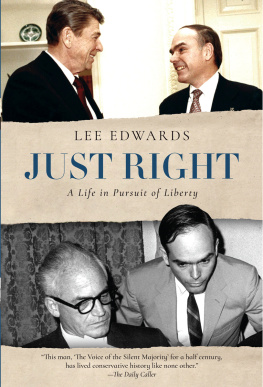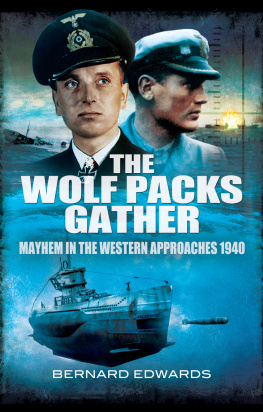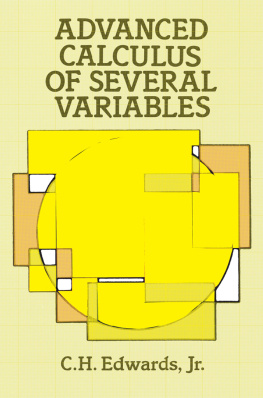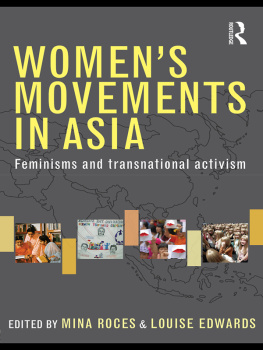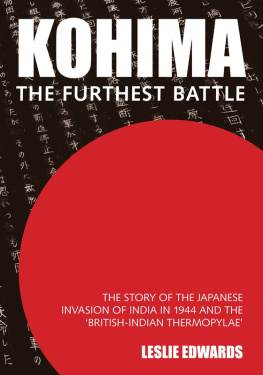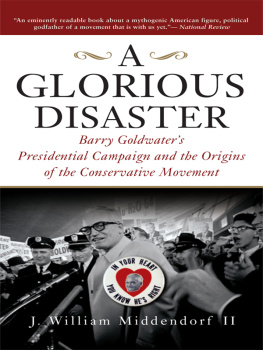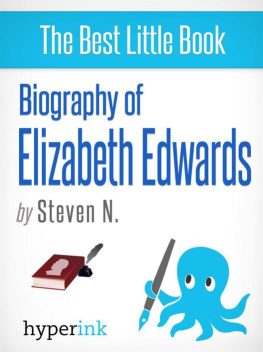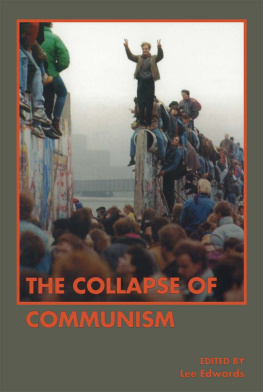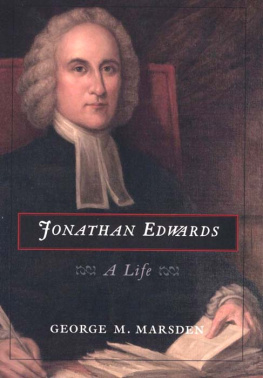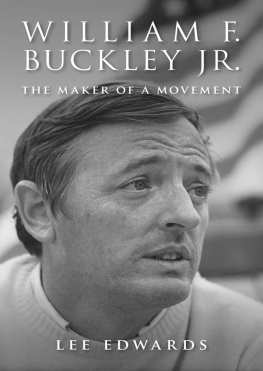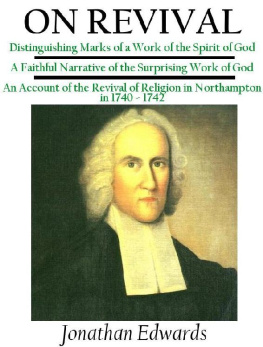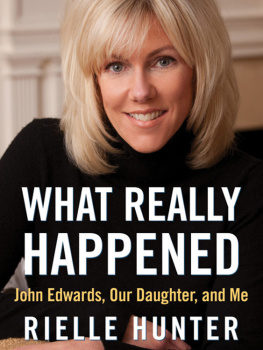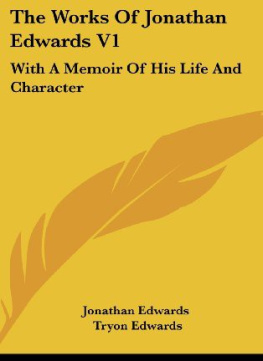JUST RIGHT
A Life in Pursuit of Liberty
LEE EDWARDS

Wilmington, DE
To the Heritage interns whom I have mentored, to the young people whom I have taught at the Catholic University of America, and to the youth organizations like the Intercollegiate Studies Institute, Young Americas Foundation, the Leadership Institute, and the Fund for American Studies that seek to better the education of the rising generation
The future is theirs
Contents
Prologue
DEDICATION
It was already hot and the air was close inside the tent that June morning as we waited for the forty-third president of the United States, who would, on behalf of the American people, dedicate the worlds first memorial to the more than 100 million victims of communism.
I said a silent prayer of thanksgiving for my departed comrade-in-arms Lev Dobriansky; for the 103rd Congress, which unanimously authorized our memorial; for John Parsons of the National Park Service, who urged us to keep our design simple; for the academic troika of Robert Conquest, Richard Pipes, and Zbigniew Brzezinski, who endorsed us early on; for the unflappable architect Mary Kay Lanzillotta, who guided us through the Washington memorial maze; for the gifted artist Thomas Marsh, who waived his six-figure fee to sculpt the bronze replica of the Goddess of Democracy; for the lovers of liberty, especially ethnic Americans, who sent us their donations, large and small, early and late; and for George W. Bush, who agreed to be our honorary chairman, a rare act for a sitting president.
POTUS has left the White House and will be here in ten minutes, a Secret Service agent said.
The long, black steel-plated limousine pulled in smoothly under the tent, and a smiling president bounded out of the back seat and strode toward us. He warmly embraced Congressman Tom Lantos, a liberal Democrat and the only Holocaust survivor to serve in the House. He glanced at Congressman Dana Rohrabacher, one of the original sponsors of the 1993 legislation authorizing the memorial, and remarked, Dana, youre losing your hair. Then the president turned to me and shook my hand. Congratulations, Lee. He looked at his watch. Okay, lets go.
I kept my introduction short:
Twenty years ago, President Reagan stood before the Brandenburg Gate in Berlin and said, Mr. Gorbachev, tear down this wall!
Cynics scoffed at President Reagans words, but two years later, the Berlin Wall came tumbling down, and soon after that, the Evil Empire was no more.
A little over two years ago, standing on the steps of the U.S. Capitol, President Bush declared, The best hope for peace in our world is the expansion of freedom in all the world.
Once again, the naysayers scoffed, but the forces of freedom and democracy are in motion around the world, demonstrating that, in the presidents words, Freedom is the permanent hope of mankind.
As President Bush walked to the podium, I looked out at the thousand people, many in their native dress, who had suffered under communism, had fought against communism, and had come to Capitol Hill to honor the victims of communism. How remarkable, and how disturbing, I thought, that such a gathering for such an occasion had never before occurred in Washington.
Good intro, the president whispered to me before opening his binder and beginning to speak. He noted that we could have chosen for our memorial an image of repressiona replica of the wall that once divided Berlin, or the frozen barracks of the Gulag, or a killing field littered with skulls. Instead, we chose an image of hope, a statue of a woman holding a lamp of liberty. She reminds us of the victims of communism, and also of the power that overcame communism.
President Bush spoke of the millions who perished under communism: innocent Ukrainians starved to death in Stalins Great Famine; or Russians killed in Stalins purges; Lithuanians and Latvians and Estonians loaded onto cattle cars and deported to Arctic death camps of Soviet communism; Chinese killed in the Great Leap Forward and the Cultural Revolution; Cambodians slain in Pol Pots killing fields; East Germans shot attempting to scale the Berlin Wall in order to make it to freedom; Poles massacred in the Katyn Forest; and Ethiopians slaughtered in the Red Terror; Miskito Indians murdered by Nicaraguas Sandinista dictatorship; and Cuban balseros who drowned escaping tyranny.
Well never know the names of all who perished, the president said, but at this sacred place communisms unknown victims will be consecrated to history and remembered forever.
As President Bush stepped down from the platform and walked the line, shaking the hands of those who had once been captive and were now free, I reflected that the ceremony, condemned by the Chinese Communist Foreign Ministry and the Russian Communist Party, was a monumental victory in the war against communism I had joined as a graduate student in Paris almost fifty years earlier.
I offer a disclaimer: I didnt suffer under communism. I never waited for a knock on the door in the middle of the night by the secret police. I was never sent to a slave labor camp in Siberia as an enemy of the people. I was born and raised in America and not a captive nation.
But I was so outraged by communist tyranny that as a young man in the 1950s I resolved that for the rest of my life I would do whatever I could to resist communism and fight for freedom. Sometimes I played a key role in the struggle for freedom. I was a founder of Young Americans for Freedom, which provided the ground troops for the Barry Goldwater and Ronald Reagan presidential campaigns. I was the director of information for the Goldwater for President Committee, which secured the 1964 presidential nomination for Senator Goldwater and changed the course of conservative (and American) history. I wrote the first political biography of Reagan. I was the founding editor of Conservative Digest, which had at one time the greatest circulation of any conservative journal. I organized the largest Washington rally for the Vietnam War and our troops. I was denounced as a son of a Birch by a nationally syndicated columnist and described by the New York Times as The Voice of the Silent Majority.
After decades as an activist, I decided to apply my passion for freedom in new ways: in my early fifties I went to graduate school to earn my PhD and became a writer, teacher, and lecturer on modern American conservatism. Over the next few decades, I wrote more than twenty books, which resulted in my being described as a leading historian of the conservative movement. So much for there being no second acts in American lives.
Sharing the platform with the president of the United States that morning in June 2007 was the pinnacle of my life, a life committed to freedom and opposed to every form of tyranny over the mind of man (to borrow from Thomas Jefferson). The conservative activist and fundraising guru Richard Viguerie likes to remind me that, with the passing of Phyllis Schlafly, I have been active in the conservative movement at the national level longer than anyone else. Over the past six decades, I have been present at nearly every major event of the modern conservative movement, and have known and worked with giants like Ronald Reagan, Barry Goldwater, William F. Buckley Jr., Russell Kirk, and Milton Friedman.
Mine has been a life in pursuit of liberty. And what a life it has been.


